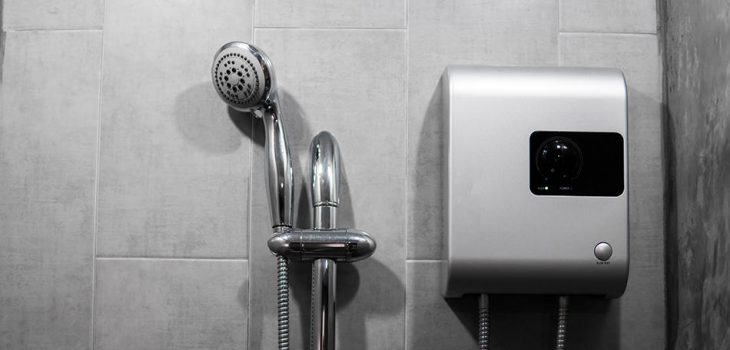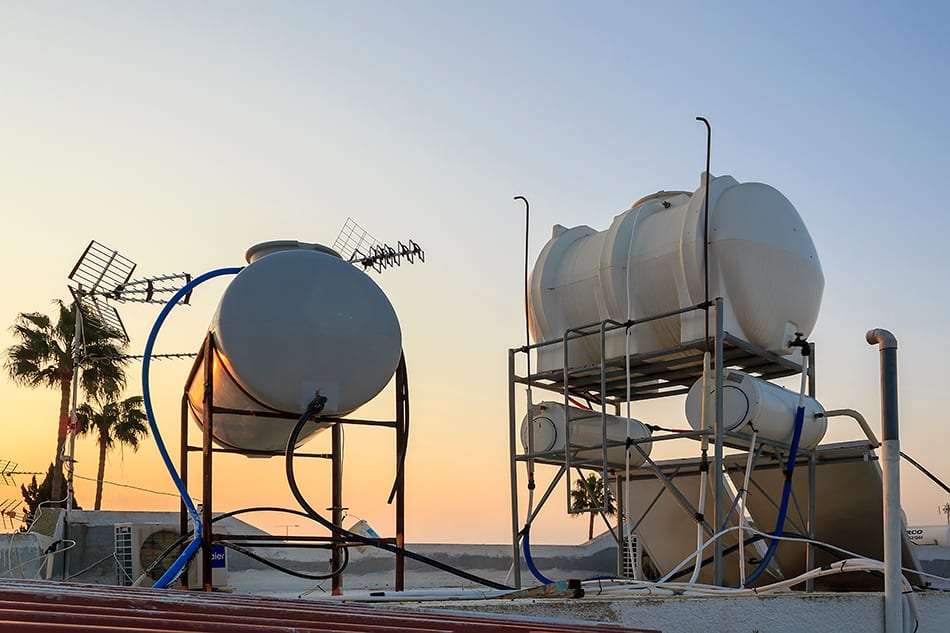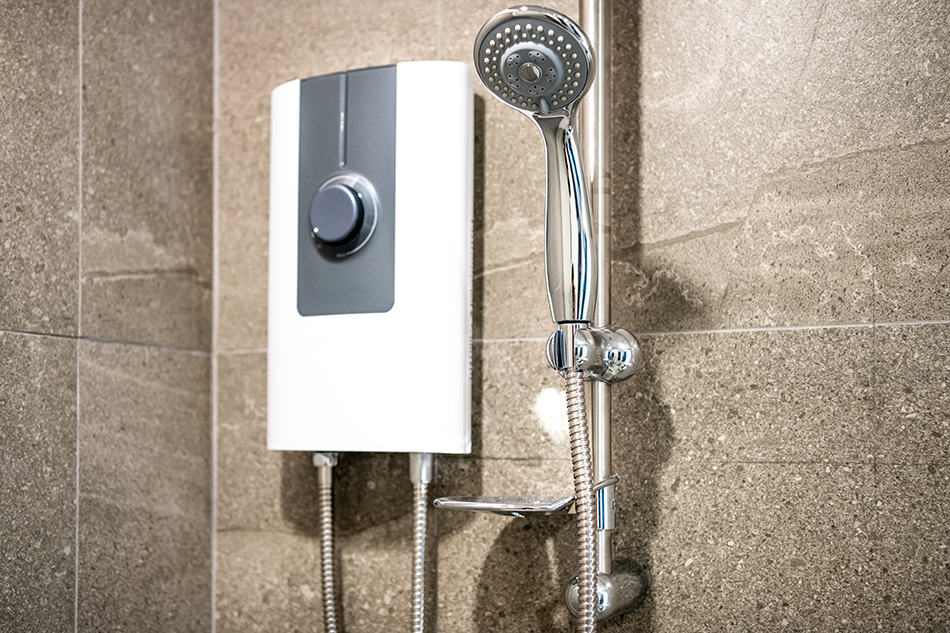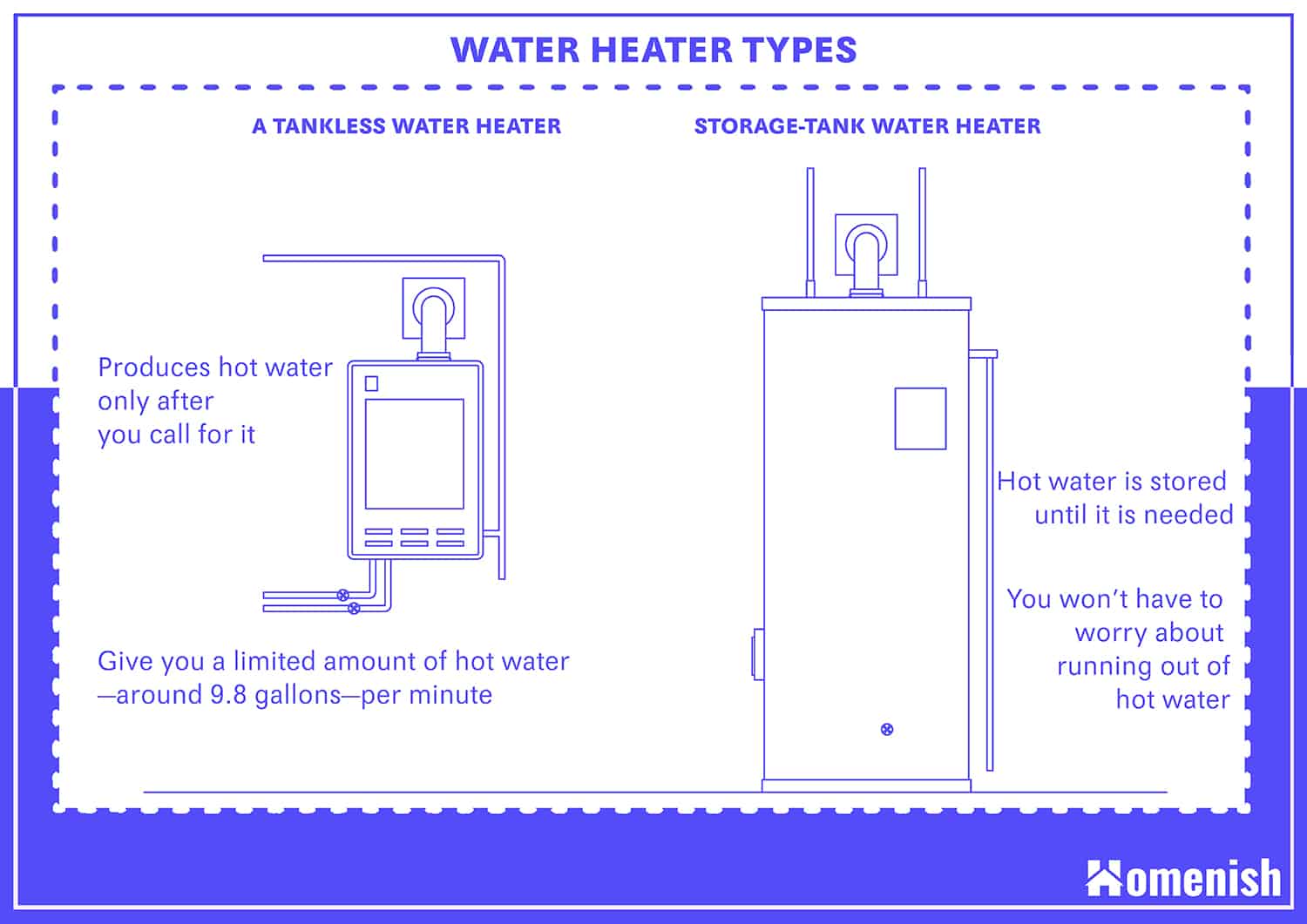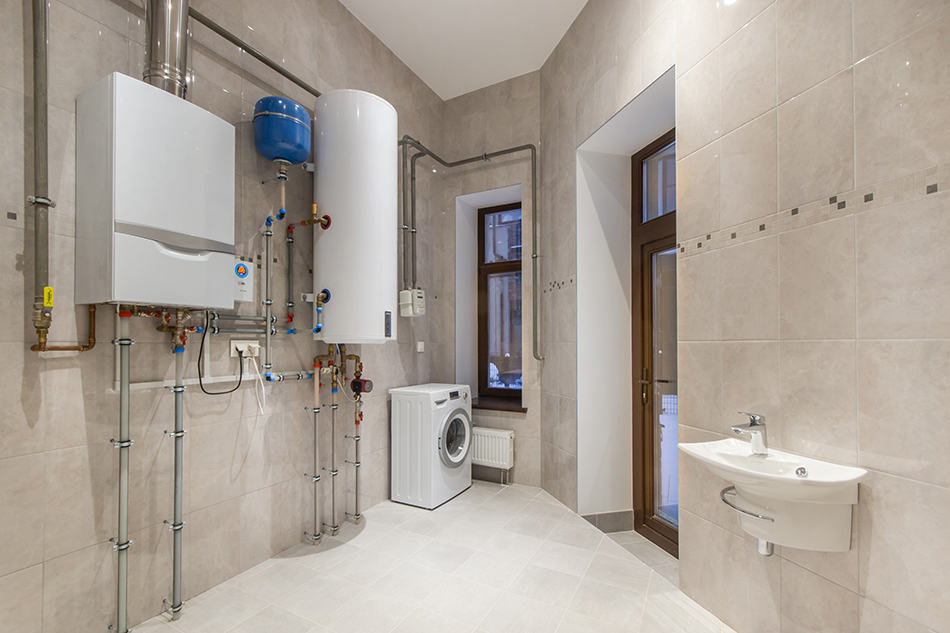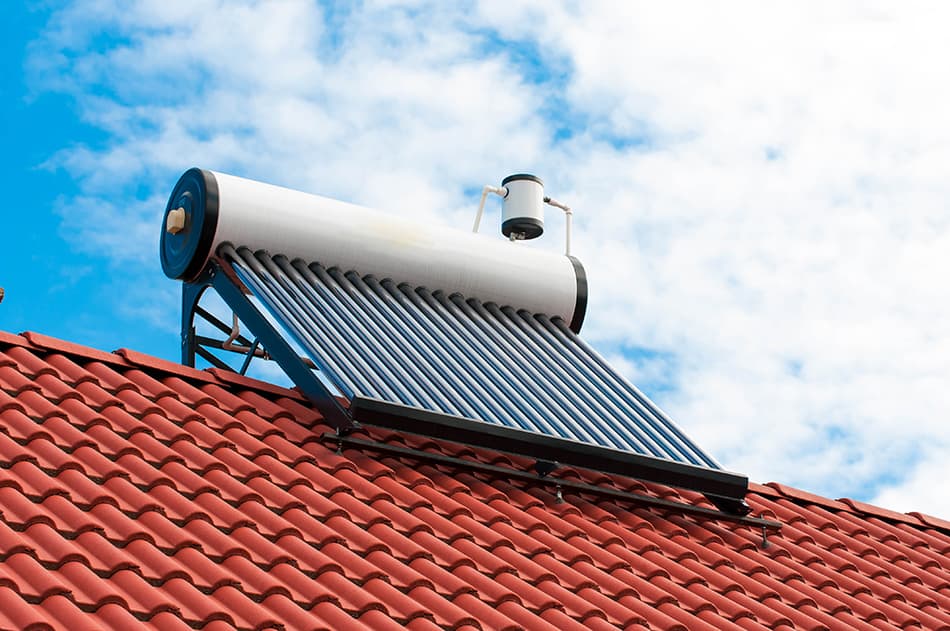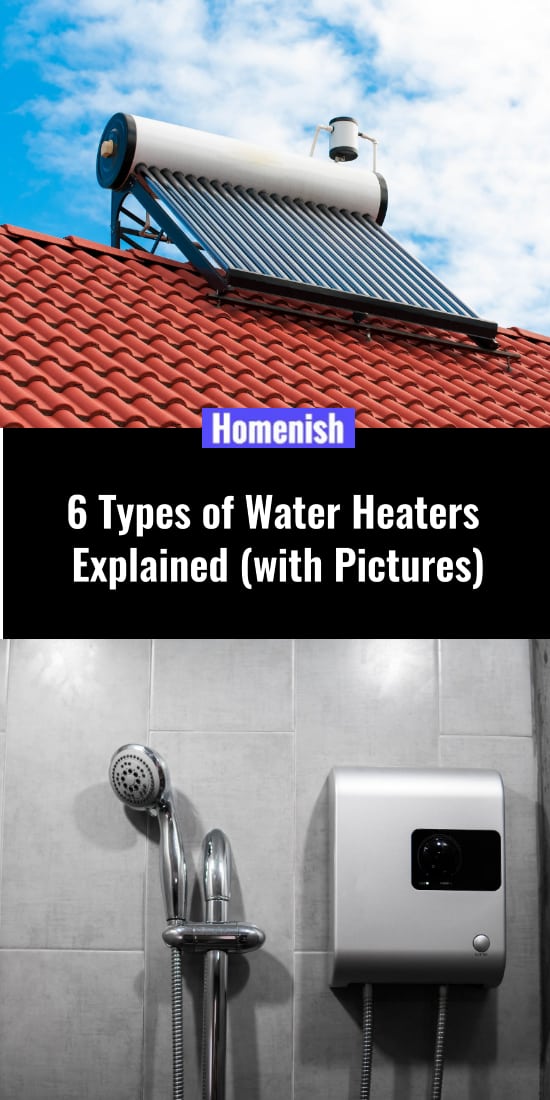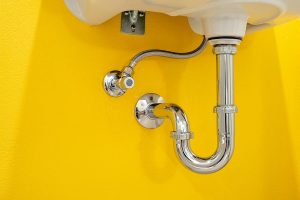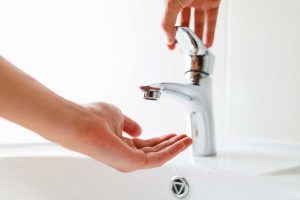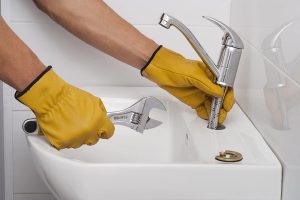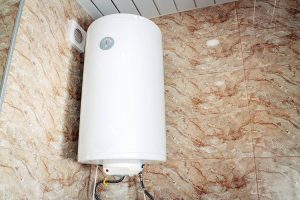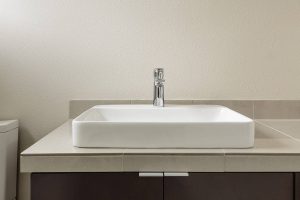Water heating systems are not a glamorous topic, but they are an essential part of running our homes, and if you are buying a new property or need to replace your old water heater, then you’ll need to know the advantages and disadvantages of the different types available.
There is no single type of water heater that is considered to be the best because different types work best in different circumstances. Some water heaters operate better in warm climates, and others are only suitable for running on gas.
To learn about the different types of water heaters and that would be best for your own home, check out this list of the six main types of water heaters available for residential settings.
Storage Tank Water Heater
This is the most common type of water heater found in residential settings, and one that most people will be familiar with. This type of water heater, as the name suggests, stores water.
These water tanks typically hold anywhere between 30 gallons and 80 gallons of water, which will all be heated up at once. The storage tank is insulated so that the water is kept hot until you want to use it for a hot bath or shower. A storage tank water heater can be run on any common type of power found in homes, including electricity, propane, gas, and oil.
Advantages:
No worry about running out of hot water
The main advantage of this type of water heater is that unless you have a large family and a small tank, then you will never run out of hot water.
The water heater has a temperature gauge on it, and when the temperature of the heated water falls below a certain level, the heater will turn itself back on and reheat all of the water in the storage tank, so that it will be hot and ready to use whenever you want it.
Disadvantages:
Can make for a pretty hefty heating bill
Because the water heater can turn itself on any time of day or night, oftentimes, you will be paying to heat water several times over. A more economical way to run this type of water heater is to set the tank on a timer.
For many people, this means having the water heater running for several hours during the night or early hours of the morning, so that plenty of hot water is available for the whole household to have a morning shower. This is good for your bank balance and good for the environment, as it saves both money and energy.
However, there is a downside to having your storage tank water heater running on a set timer, and this is that once the water being stored in the tank goes cold, it won’t be reheated again until your timer kicks in. This means if you want an impromptu shower, then you could be faced with quite a shock of chilly water.
Capacity is the maximum amount of hot water you can use at any one time
If, for example, you have guests staying at your home and lots of people want to use the shower in the morning, you might run the water tank completely empty. This would mean that you will have to wait for the water tank to refill itself and then heat the water up before anyone else can enjoy a hot shower, and that’s a process that could take several hours. In this way, some people find storage tank water heaters to be inconvenient, but so long as you have a reasonably sized tank, then it isn’t an issue you should encounter very frequently.
The biggest problems arise if you have a tank that is too small to accommodate the regular needs of your family. In this case, you’ll find yourself constantly running out of hot water, meaning it’s time to invest in a bigger storage tank water heater or find a different type of water heater, all together with no restrictions on water capacity.
Needs regular maintenance to prevent corrosion and extend the lifespan
Another issue with these types of water heaters is maintenance. Due to the fact that the storage tank holds water, the inside of it can become covered with mineral scale or have dirty sediment sitting at the bottom of it. These things can lead to corrosion and shorten the lifespan of the tank considerably.
On average, a storage-tank water heater will last around ten to twelve years, but if you want to get longer out of your heater, then you’ll need to partake in regular maintenance. Emptying out the water tank, flushing the system, and removing residue and limescale will greatly improve the chances of your water heater standing the test of time.
This maintenance, ideally, should be completed twice a year, though unfortunately, it is not something that most homeowners even have on their radar. You should also test the pressure relief valve at least annually to ensure it is working as it should.
Tankless Water Heater
A tankless water heater, unsurprisingly, does not have a tank. Instead of holding water and heating it like a conventional storage-tank water heater, a tankless water heater has hot coils that can heat water up in mere seconds as it passes through the system, giving you hot water on demand.
This type of water heater is also sometimes called an on-demand water heater, as you never have to wait for your water to be heated up.
Advantages
More energy-efficient than a storage-tank water heater
As the heating coils in this heater only ever heat water up when a shower or faucet is turned on, it is much more energy-efficient than a storage-tank water heater. This saves energy and saves money because you will only be paying to heat up water that you actually use, as opposed to paying to heat water up to sit in a tank.
Disadvantages
Lower flow rate than a storage-tank water heater
On average, tankless water tanks can only move water at between two and five gallons per minute, which means their flow rate is quite low. You may notice low water pressure when using a tankless water tank, or you may find that you can have only one household appliance on at one time that uses hot water; for example, the tank won’t be able to supply hot water to the shower and the dishwasher at the same time, which could be quite inconvenient if you have a large household.
To combat this, some households install several tankless water heaters in their homes so that each appliance has its own hot water supply. This is possible because tankless water heaters have a compact or slimline design and can fit seamlessly into cupboard spaces without taking up too much room or looking unsightly.
More expensive than conventional storage tank water heaters
If you want to buy several tankless water heaters to ensure you have enough hot water for all of your appliances, then the initial outlay could be quite hefty. Fortunately, though, tankless water heaters have a long life expectancy of up to 20 years, so the initial expense is balanced out by the fact that you won’t need to replace your water heaters for a long time, added to the money savings you should make on your power bill.
Although tankless water heaters do not store water, they should still undergo routine maintenance in order to ensure longevity. The unit should be flushed on an annual basis by a plumber to remove any accumulation of scale from mineral deposits, and prevent corrosion.
Heat Pump Water Heater
Heat pump water heaters operate through electricity. They don’t actually generate heat themselves but instead draw heat from the ground and air around them, then target this heat at the water in their storage tank to heat it up.
They work like a reverse refrigerator, extracting heat from their surroundings, and then using electricity to circulate that heat in the pump. Effectively, a heat pump water heater transfers the available heat from the air to the water, instead of creating new heat to warm up the water in the way that other types of heaters do. By doing this, they are incredibly efficient and use up to 60 less electricity than other types of electric water heaters.
There are two types of heat pump water heaters; split systems and integrated units. For a split system, the water tank and the compressor are separate, in the same way, you would usually find with an air conditioning system. One unit will be outside of your home while the other will be fixed inside it. With an integrated system, both the tank and compressor will be fitted together, typically outside of the home.
These systems are usually quite sizable, so they do take up a fair amount of space and can look cumbersome on the outside of your home. You will generally need to ensure you have around six to eight feet of vertical clearance in the space where you want your heat pump water heater to be fitted. They can also be noisy, so this should be a consideration when choosing the location of your heat pump.
Advantages
Low running costs
By being so energy-efficient, heat pump water heaters are known for save electricity bills. Unfortunately, these types of water pumps are very popular and desirable, which means they typically come with a large price tag. However, in spite of the high cost of purchasing a heat pump water heater, these systems are still expected to save you money in the long run.
Disadvantages
May not be as effective in cold climates
One of the main drawbacks of heat pump water heaters is that they only operate effectively in warm climates, which can be quite disappointing if you live in a cold climate. The reason for this is that they work by utilizing hot surrounding air, so if the surrounding air is cold, then the heat pump will have to work much harder to heat up the water. This will make the heat pump much less energy efficient, and it may struggle to heat the water at all in some cold climates. Heat pump water heaters are recommended for climates that have year-round temperatures of between 40ºF and 90ºF.
Filters should be cleaned regularly
To keep your heat pump water heater operating effectively, it will need to have its filters regularly cleaned. The water tank will also benefit from being annually flushed to remove any sediment in the bottom of the tank or mineral deposit build-up.
Can cool the air around them
This is because while they utilize surrounding warm air, they expel the cold air, which means when they are working, you will find the air around the unit can be a few degrees cooler than elsewhere in your home. This should also be a consideration when choosing a spot for your heat pump, or you may want to avoid this type of heater altogether if keeping your home warm in winter is something you struggle with.
In the right scenario, heat pump water heaters are a worthwhile investment. Though the initial cost can be expensive, this is offset by the energy saving you should make over the course of the following years. They are especially effective in warm climates and can be a good alternative or backup option to solar heating.
Solar Powered Water Heater
Solar powered water heaters have two parts: an insulated water storage tank and solar panels known as ‘collectors.’ The solar panels collect energy from the sun and then transfer that energy to a heat-conducting system to heat up the water in the storage tank.
This is by far the most energy-efficient way to heat water in a domestic setting, and though it works best in hot and sunny climates, it can actually be an effective means of heating water in any location.
As the sun is an endless and free source of energy, having a solar-powered water heater will also drastically cut down your energy bills. In climates that are sunny all year round, you may even find that you can completely eliminate water heating bills altogether.
Disadvantages
Initial expense
They can be very costly to buy and install, and even if you are able to eliminate your monthly water heating bills, you may not find that you have broken even for many years. In this respect, it is best to look at solar powered water heaters as a long-term investment rather than a means of quickly saving money. If, however, you are passionate about the environment, then switching to a solar powered water heating system is your best option. It can drastically reduce your total power usage, and as a renewable energy source, it can contribute to a lower carbon footprint for your household.
Solar panels are typically installed on the roof of your home. If you are concerned about spoiling the look of your home by having solar panels on your roof, you could opt to have them on your garage roof, or if you have a large enough space, you could have them fitted in your backyard.
Requires a backup system in cooler months or cloudy periods
Even in very hot and sunny climates, you should still have an alternative means of heating water so that you don’t find yourself with cold showers.
Solar panels cannot guarantee you with a hot water supply all year round, and if the sun is low during winter months, it might not provide enough energy to heat the amount of water your household needs. A backup water heater will kick in when solar energy is unavailable, or they can further raise the temperature of the water that has been warmed by the solar energy.
Requires annual maintenance
Solar panels should be inspected annually to ensure they are working correctly. This will include checking that all nuts and bolts are tight, that the pumps are operating properly, and that the connections are secure. The water storage tank should also undergo annual maintenance in the form of flushing to remove mineral build-up and help to prevent corrosion.
Condensing Water Heater
A condensing water heater has a large tank for storing water, and it funnels excess heated exhaust fumes from your home and directs it to the water tank to heat the water.
Advantages
Energy-efficient
This type of water heater will only work in homes that use natural gas as their main energy source because it utilizes energy that has already been burnt elsewhere in the home.
This makes it a very energy-efficient type of water heater because it is able to heat water without using much additional energy. Instead, it makes the most of the energy you have already burnt in your home, for example, by using the gas hob or oven.
Not run out of hot water
They also come with large tanks that mean you won’t run out of hot water and have the luxury of hot water on demand at any time.
Most types of condensing water heaters use a large tank, and examples of these types of systems with smaller tanks are rare. Because of this, they are most suitable for family homes and less ideal for condos and apartments. These are very popular systems for residential properties that run on natural gas because they are energy efficient and therefore reduce monthly water heating costs.
Disadvantages
The drawback of this type of water system is that it is really only suitable for larger properties and for those that have natural gas as a primary energy source.
As a condensing water heater has a water tank, you should help to improve its longevity by annually flushing the system. The gas valves should also be checked and maintained on a regular basis for safety reasons.
Combined Space and Water Heating System
Also known as combi-boilers, these heat systems perform two functions; heating water and also heating the home. This is what the term ‘combined’ refers to in their name.
Advantages
No water tank needed
A combination space and water heating system heat your water instantaneously directly from the mains, which means you won’t need a water tank.
It does this by igniting a gas burner when a faucet is turned on, and a heat exchanger very quickly transfers the energy from the gas burner to the water, heating it up immediately.
Energy efficient
Because you always have hot water on demand, and that water is only ever heated when you need it, this saves power and money because you’ll only ever be paying to heat the water you’re actually using.
This type of water heater is the most popular way to heat residential water in the UK, where natural gas as a main energy source is common. It is also an excellent option for US homes that run on gas.
Great for small space
This means the space where an old water tank previously sat can be freed up and utilized in a different way. This is especially useful in small homes or apartments where space is limited because an airing cupboard that previously housed a water tank could now be used for additional storage space.
As a combined space and water heating system also manages the heating of your home, it means you won’t need several types of heating appliances in your home, which can also save space and means you’ll have fewer unsightly appliances ruining the look of your interior.
Disadvantages
There are several downsides to this type of water heater. This includes it can be more expensive than traditional water heaters and will need professional installation. Also, it is not suitable for all homes.
